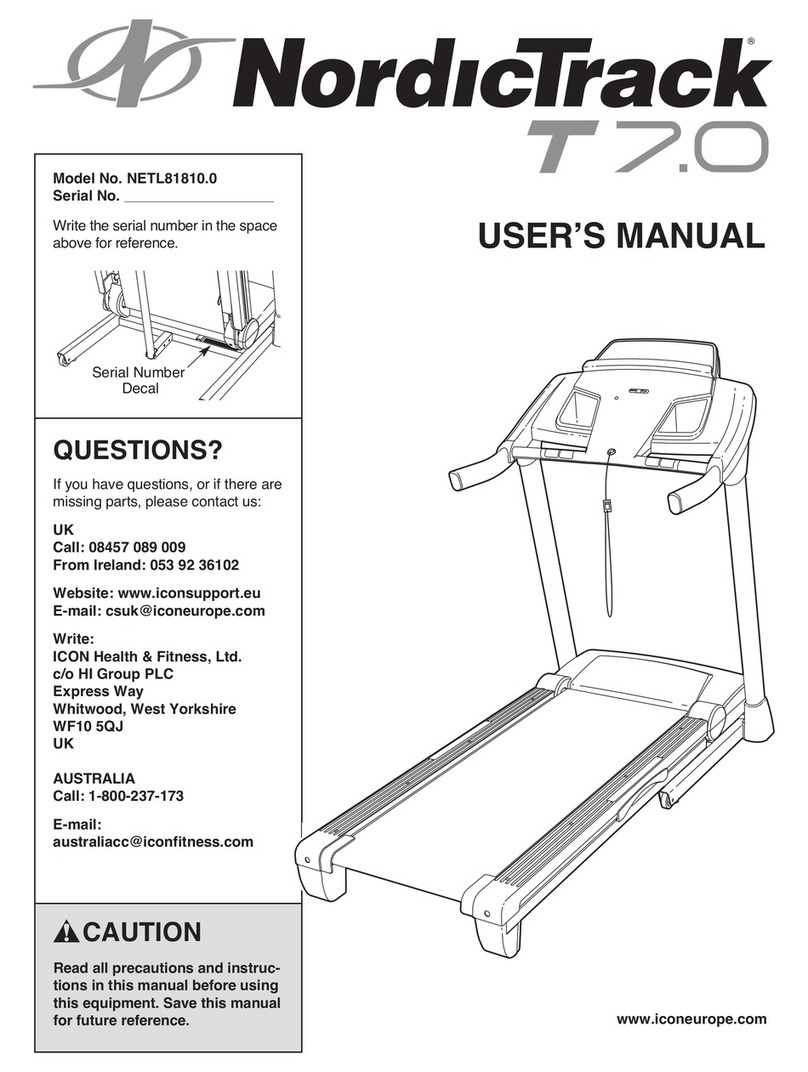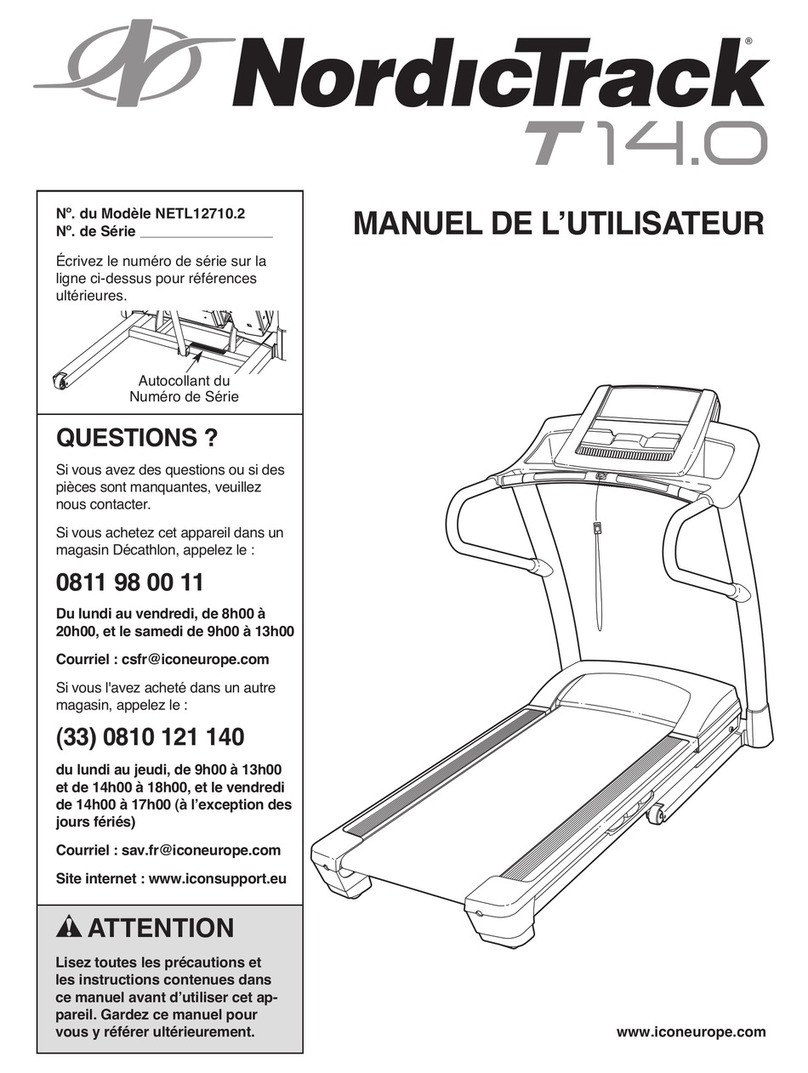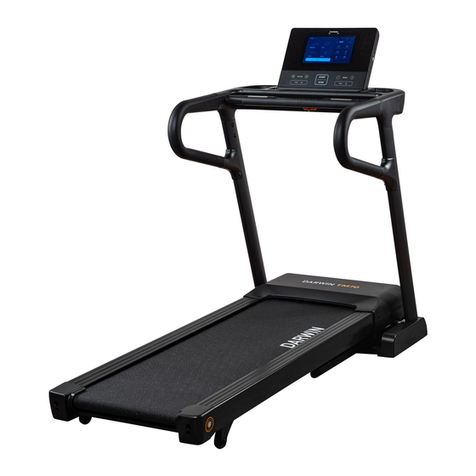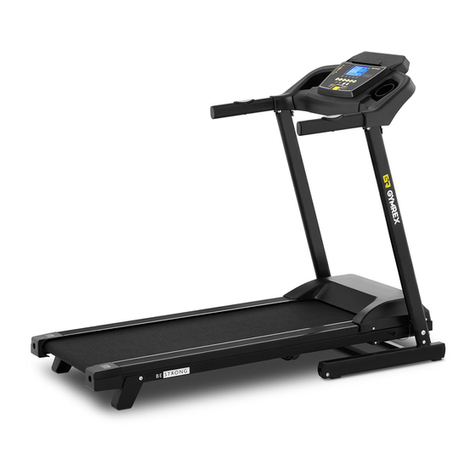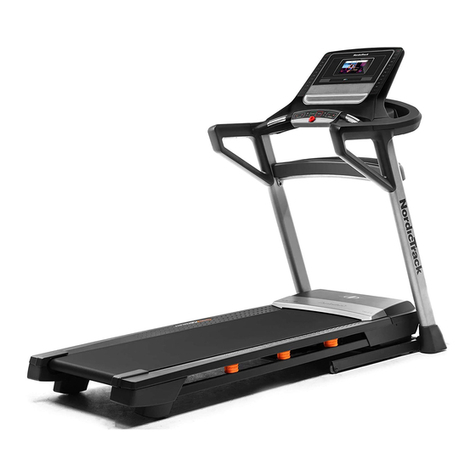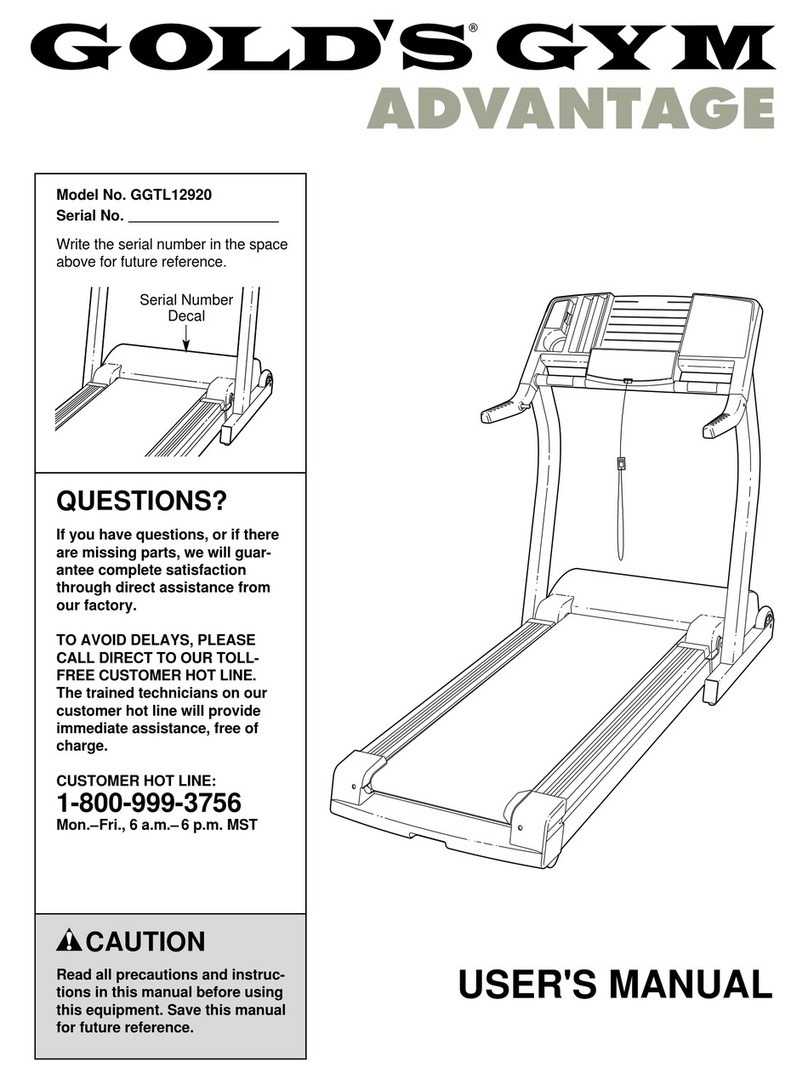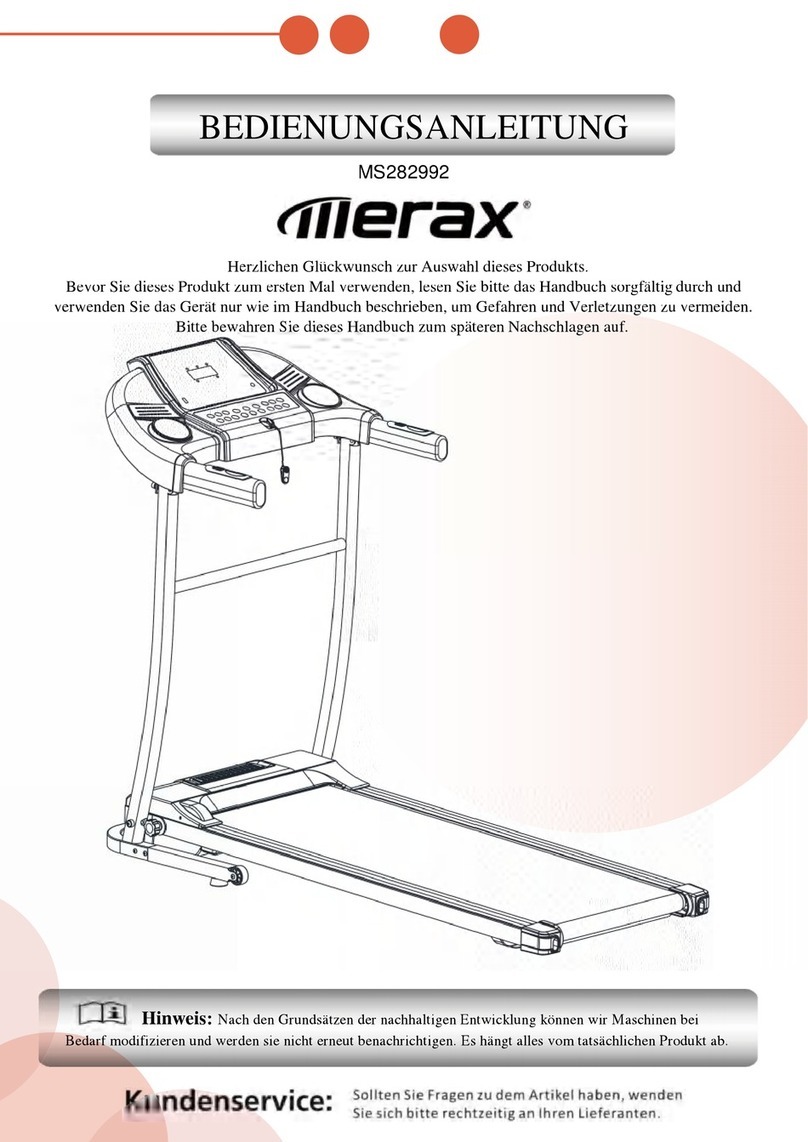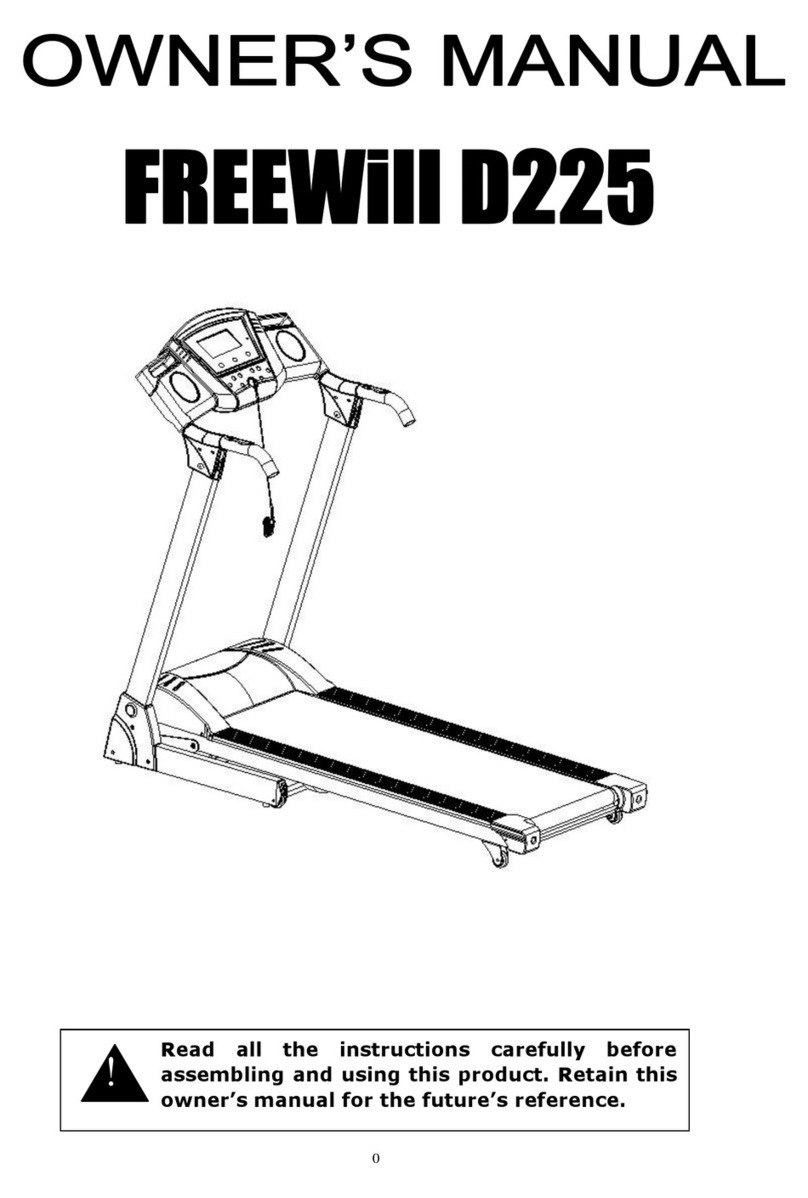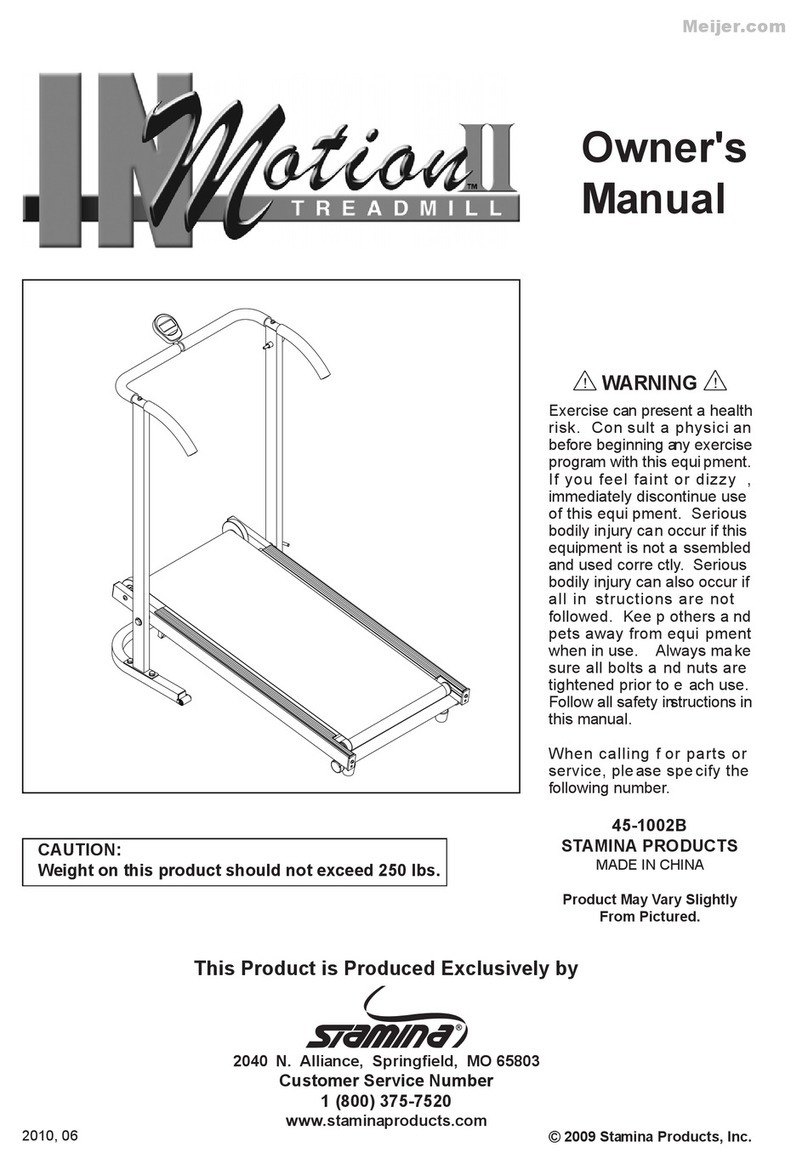1.2 Personal safety
+Before you start using the equipment, you should consult your physician that this type of exercise is
suitable for you from a health perspective. Particularly aected are persons who: have a hereditary di-
sposition to high blood pressure or heart disease, are over the age of 45, smoke, have high cholesterol
values, are overweight and/or have not exercised regularly in the past year.
+Please note that working out excessively can seriously damage your health. Please also be aware that
heart rate monitoring systems might be imprecise.
+The equipment may only be used for its intended purpose; that means for running training by adults.
+Any other usage is prohibited and potentially dangerous. The contract partner cannot be held liable for
damage resulting from improper use.
+ The equipment is strictly for use by one person at a time.
+Children should not be allowed unsupervised access to the equipment.
+Before starting your training, make yourself familiar with all of the equipment‘s functions and setting
options. Have an expert explain the correct usage of the product to you.
+ Make sure that nobody is in the range of motion of the equipment while exercising.
+Keep your hands, feet and other body parts, hair, clothing, jewelry and other objects well clear of mo-
ving parts.
+ During use, wear suitable sports clothing rather than loose or baggy clothing. When selecting sports
shoes, think about the suitability of the sole – preferably this should be made of rubber or other non-
slip materials. Shoes with heels, leather soles, studs or spikes are not suitable. Never work out in bare
feet.
+ At the rst signs of weakness, nausea, dizziness, pain, diculty in breathing or other abnormal symp-
toms, stop your workout immediately and, if necessary, consult your physician.
+ Without prior agreement from your authorized contract partner, opening the equipment is prohibited.
+ The equipment has stable steps on the sides that you can stand on in case of an emergency and leave
the equipment.
+The safety key should be inserted during all training.
+The safety key and the power cable should be removed when you are not present in order to rule out
improper usage by third parties.
Safety Key
+The equipment has an EMERGENCY STOP mechanism for your safety. The equipment may only be ope-
rated when the safety key is properly attached to the contact point of the cockpit. The equipment will
automatically stop immediately if the safety key is no longer on the contact point. That is why you
should attach the safety key string with the clip to your clothing before training. Remove the safety key
from the cockpit with the help of the string if you would like to quickly stop the treadmill, you can no
longer handle the speed or an emergency occurs.
+In order for the safety key to be released from the cockpit contact point in the event of a fall, the clip of
the safety key must be attached (xed) to your clothing!
+An uncontrolled usage of the equipment by third parties can be avoided by removing and storing the
safety key.
+Prevent children from having access to the safety key.

